St. Augustine grass (Stenotaphrum secundatum) is occasionally referred to as “buffalo grass”; however, this term usually refers to a different plant (Bouteloua dactyloides).
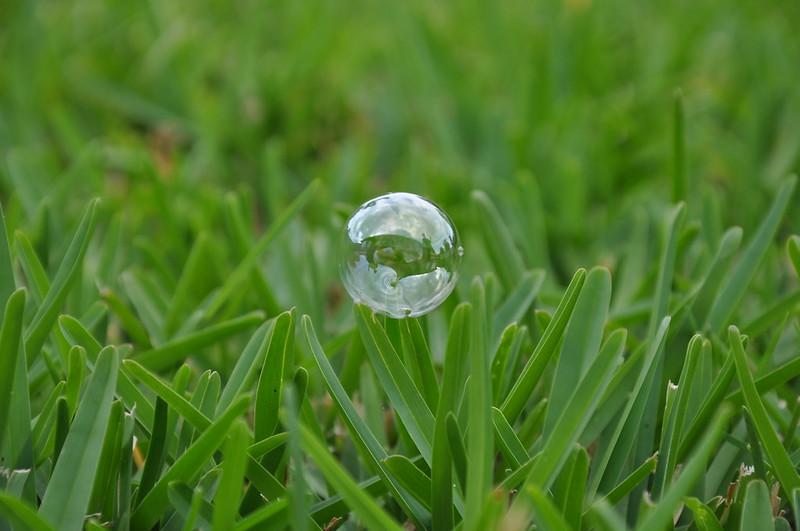
St. Augustine grass is a warm-season turf grass with broad, spreading leaves that thrives in the sun.
St. Augustine grass is a warm-season grass that spreads quickly and is commonly used for lawns in warm areas. Tolerant of both high temperatures and high humidity, it has become a popular choice for lawns in Florida and other Gulf Coast areas.
But is it good for your lawn? Well, read on to find out!
Since it comes from the Poaceae family, St. Augustine is a true grass. It forms lush, dense mats of turf thanks to its bluish-green leaves, its low, creeping nature, and its stolons that help it spread quickly. Its blades are broad and flat. People who live near the ocean can benefit significantly from St. Augustine grass due to its high salt tolerance.
St. Augustine grass can grow in many soils, but it won’t survive in places that are constantly soggy or dry. It will also turn brown in the fall and take a while to green up in the spring.
Out of all the warm-season grasses, it is the least tolerant of cold. St. Augustine, however, is incredibly drought- and heat-resistant and can even thrive in partial shade.
However, when grown in situations with dense shade, St. Augustine grass creates a turf that is rather sparse and spindly.
So, if you want to replace your lawn with St. Augustine, you’re in the right place. We will tell you everything about growing and caring for St. Augustine grass and lawns.
A Quick Look At St. Augustine Grass
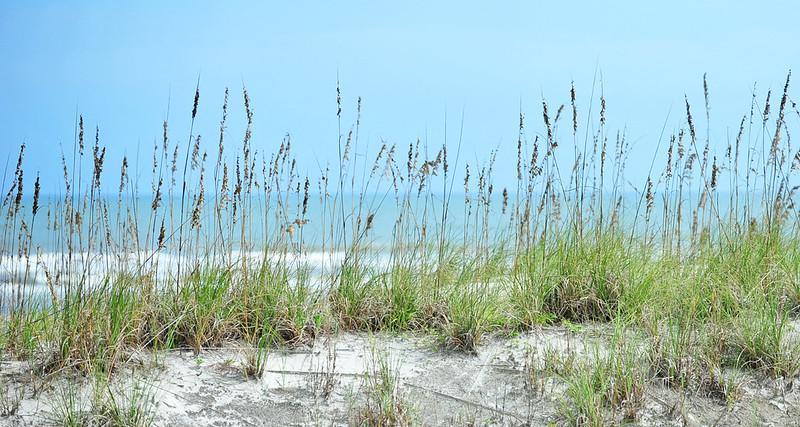
St. Augustine is native to salty and freshwater marshes, sandy beach ridges, and limestone shorelines.
St. Augustine grass is of tropical origin and is native to freshwater marshes, the outskirts of swamps and lagoons, and limestone shorelines.
Due to its resilience to high temperatures, it is widely planted as a lawn grass in states with warmer climates, both inland and along the coast.
St. Augustine grass, however, cannot survive colder winters and can only be grown in regions where the average temperature stays above freezing.
In a nutshell, here are some of the St. Augustine grass’s most prominent characteristics:
| Common Name | St. Augustine grass, Buffalo turf, and Buffalo grass. |
| Scientific Name | Stenotaphrum secundatum |
| Plant Family | Poaceae |
| Native Region | West Indies, Gulf of Mexico, and Western Africa. |
| Ideal Planting Time | Late spring or early summer |
| Plant Type | Perennial |
| Hardiness Zones | 8, 9, and 10. |
| Ideal Mowing Height | 2½ to 4 inches |
| Grass Color | Bluish-green |
| Grass Texture | Coarse |
| Sunlight Needs | 4 to 6 hours |
| Ideal Soil Type | Sandy, well-drained |
| Soil pH | 5 to 6.5. |
| Drought Tolerance | Excellent |
| Weed Tolerance | Good |
| Disease Resistance | Average |
| Traffic Tolerance | Average |
| Water Needs | One inch of water per week |
| Fertilizer Requirements | 2 to 4 times per year |
| Shade Tolerance | Good |
Related: Why Is My St. Augustine Grass Turning Yellow | Possible Causes & Easy Fixes
St. Augustine Grass Basics
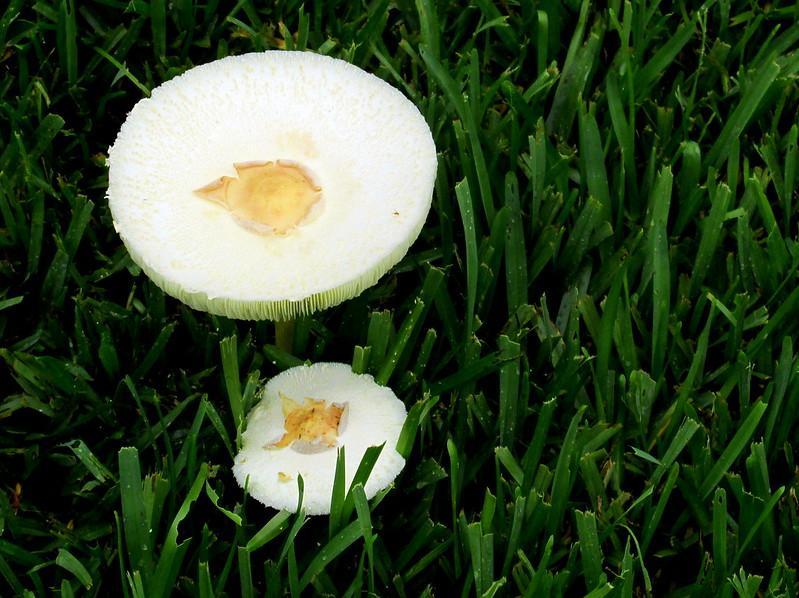
In Florida and the Gulf states, St. Augustine grass is one of the most preferred lawn grasses.
Due to its adaptability to both tropical and subtropical temperatures, as well as sandy soils, St. Augustine grass is a popular choice among homeowners in the South for use as a lawn covering.
Furthermore, it is a warm-season plant that thrives in humid conditions but struggles to survive dry spells, and it rarely produces viable seeds.
This is also why it is commonly planted using sod or plugs. St. Augustine lawns are highly sought after due to their wide blades, rapid growth, and moderate shade tolerance. Having a well-kept St. Augustine lawn is like giving your property an instant makeover.
Fertilization
St. Augustine grass thrives with consistent fertilization. The best time to fertilize is in the spring after new growth has appeared.
Maintain a fertilization schedule for the lawn during the summer months such that it receives food once every six to eight weeks.
Also, it is not necessary to use a specific brand of grass fertilizer; instead, it is essential to pay attention and carefully follow the application directions printed on the container.
Humidity & Temperature
Because it does well in environments with high temperatures and high relative humidity, St. Augustine grass is often used in areas such as the Southeast of the United States.
Watering
Keep the soil uniformly moist for the best results. Once it has become established, St. Augustine grass is able to thrive in a wide range of soil types and has moderate tolerance for drought. For best results, however, avoid too little or too much water.
Soil & Light
St. Augustine grass requires adequate drainage in order to thrive. To get the best results, use quality garden loam. Additionally, even though it may tolerate some shade, growing St. Augustine grass in full sun will provide the best results.
How To Grow St. Augustine Grass In Your Yard?
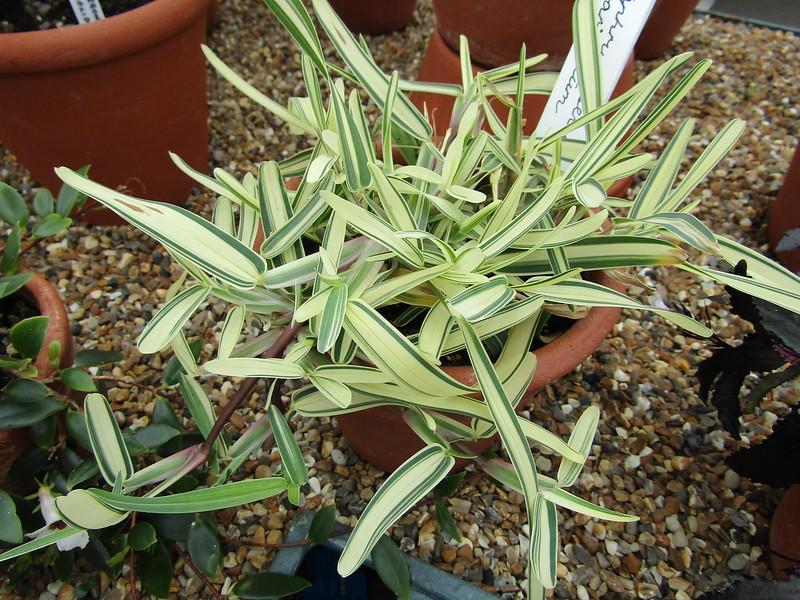
Photo Credit Sod or plugs should be planted in late spring or summer because St. Augustine grass grows best in the heat.
There are a few things that you need to take into consideration before you go out and get the bag of seeds for creating a mono stand of St. Augustine grass.
The growth of this grass necessitates the use of sound judgment at each and every stage of the process. So, to ensure that your St. Augustine lawn always looks its best, here are some ideas:
1. Research Different Cultivars
It takes some research to determine which cultivars thrive well under the typical conditions in your region, like heat and humidity, disease, and frost, but it is well worth the effort.
Given the wide variety of St. Augustine grass cultivars, each of which has its own set of pros and cons, it is essential to pick the type that is suited to the goals you have in mind. The following are examples of some of the most well-regarded varieties of St. Augustine grass:
Seville St. Augustine
Seville is a low-growing semi-dwarf variety of the St. Augustine grass. Seville, with its dark green color, does well in both direct sunlight and moderate shade as long as it receives 6 to 7 hours of sunlight per day. Of all the St. Augustine grasses, Seville is arguably the one that tolerates shade the best.
Some distinguishing characteristics of Seville St. Augustine grass are as follows:
- Good Drought Tolerance
- Good Injury Recovery
- Good Shade Tolerance
- Good Wear Tolerance
Scotts ProVista St. Augustine Grass
The Scotts ProVista St. Augustine turf grass is dark green, thrives in direct sunlight, and performs significantly better when exposed to a medium amount of shadow.
The Scotts ProVista St. Augustine turf is the first glyphosate-tolerant turf to be introduced to the market. This allows you to eliminate costly weeds such as torpedo grass and Bermuda grass without causing any damage to your lawn.
Some distinguishing characteristics of ProVista St. Augustine are as follows:
- Dense, horizontal growth habit
- Its growth habit and homogeneity cut mowing needs in half
- Improved performance and quality in moderate shade
- Tolerance to glyphosate for total weed control
Floratam St. Augustine Grass
Floratam St. Augustine grass is an aggressive summertime grower because it thrives in light and heat. It has a coarse texture with gentle blades that make it nice to walk on, and is a dark green color overall.
Many academic institutions, including Texas A&M University and the University of Florida, collaborated in the 1970s to create this grass strain.
Some distinguishing characteristics of Floratam St. Augustine Grass are as follows:
- Good drought tolerance
- Good shade tolerance
- Moderate wear tolerance
Raleigh St. Augustine Grass
Raleigh St. Augustine grass is a cold-hardy cultivar that North Carolina State University released in 1980. The Raleigh can thrive in heavy soils that are organic, clay-rich, and have a medium to low soil pH.
It has a texture similar to that of gritty sand and a medium green tint. When it comes to fertilizer, mowing, and other similar tasks, this St. Augustine grass cultivar is the most tolerant of the bunch.
Some distinguishing characteristics of Raleigh St. Augustine Grass are as follows:
- Good drought tolerance
- Good wear tolerance
- Medium-green color
- Excellent shade tolerance
CitraBlue St. Augustine Grass
The turfgrass breeding program at the University of Florida was responsible for developing CitraBlue St. Augustine grass. If you want a lot of contrast in your yard, Citra blue is a good choice because it is a deep, dark blue.
Even in locations with strict watering regulations, CitraBlue St. Augustine can thrive, as it is more resistant to drought than other St. Augustine cultivars.
Some distinguishing characteristics of CitraBlue St. Augustine Grass are as follows:
- Blue-green color
- Grows laterally
- Excellent drought tolerance
- Excellent shade tolerance
- Excellent wear tolerance
Palmetto St. Augustine Grass
The original “shade” grass, Palmetto St. Augustine, thrives in both shade and sun. In terms of patented grasses, Palmetto is by far the most popular. Its origins can be traced back to the African and American Atlantic coasts.
The Palmetto is a semi-dwarf variety, like the Seville grasses. Even so, Palmetto often develops less thatch than other St. Augustinian varieties.
Some distinguishing characteristics of CitraBlue St. Augustine Grass are as follows:
- Emerald-green color
- Good drought tolerance
- Good wear tolerance
- Good shade tolerance
The Turfgrass Producers of Florida have released a fantastic book by Jamie Buhlman titled “A Guide to Identifying St. Augustine Cultivars” that will help you tell your St. Augustine cultivars apart. It has a lot of technical material, so if you are genuinely feeling like channeling your inner turfgrass nerd, this is the book for you.
Related: How To Make St. Augustine Grass Grow Thick & Spread Fast | Tips From Experts
2. Test Your Soil
Call your county extension service to arrange for a soil test if you’re not sure if St. Augustine grass will grow in your yard. It is also good to consult the many materials made accessible by the United States Department of Agriculture (USDA).
It can thrive in many soil types but does best in sandy conditions. Also, it prefers warmth, but it can survive temperatures as low as 60 degrees and continue to grow well.
3. Plant It At The Right Time Of The Year
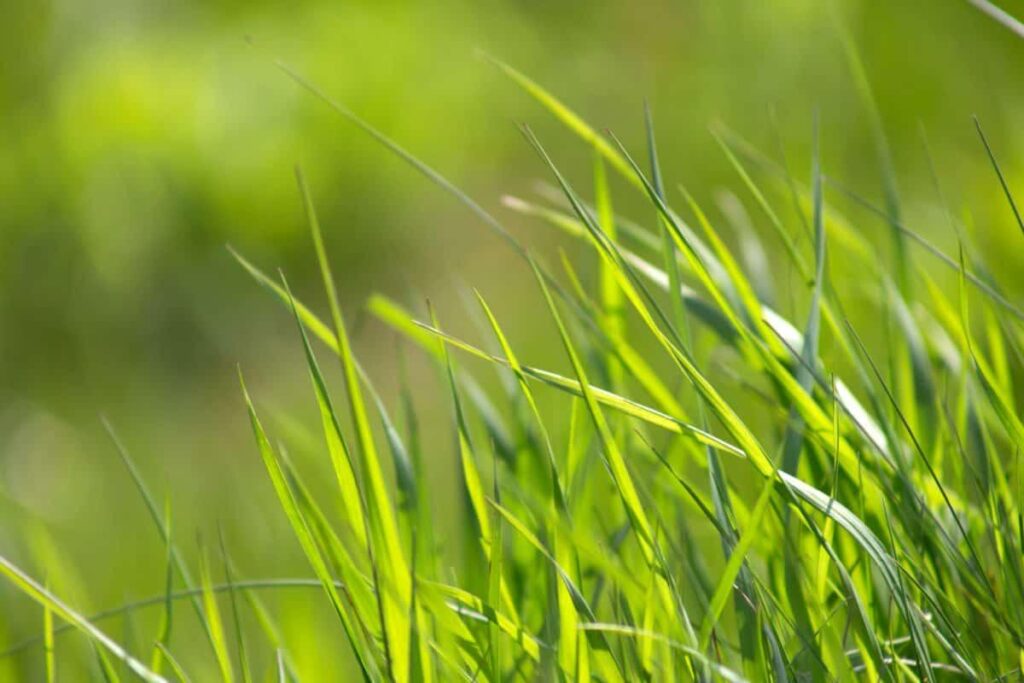
St. Augustine grass does best in warm weather, so late spring or summer is the best time to put sod or plugs.
St. Augustine is sold both as sod and as plugs, giving you the flexibility to plant it in the most convenient way. Check out this post for a comprehensive guide on growing St. Augustine grass using plugs. St. Augustine grass thrives in the warm temperatures of spring and summer when highs often range from 80 to 100 degrees Fahrenheit.
So, plugs or sod of St. Augustine grass should be planted during this time in full sun at least 90 days before the first expected fall frost in your area. If you give your St. Augustine grass enough time to establish its roots, it should pass the winter without any damage.
Common Issues With St. Augustine Grass
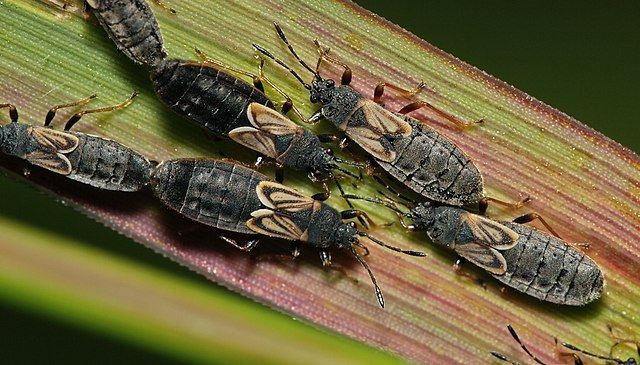
St. Augustine grass in hot, sunny regions of the lawn is susceptible to being destroyed by chinch bugs.
St. Augustine grass, with all of its admirable characteristics, is not without its flaws. St. Augustine grass is susceptible to damage from a variety of pests, including insects and diseases.
The following are two of the most typical challenges that people come across when attempting to cultivate St. Augustine grass:
Downy Mildew Disease
The downy mildew disease can attack St. Augustine grass if it is not maintained correctly. Diseases such as downy mildew thrive in environments with poor air circulation.
They do well in conditions of high relative humidity and moisture. Maintaining a clean garden will help you avoid problems with downy mildew. For example, water the grass early in the day so the individual blades have enough time to dry before the sun sets.
In addition, you should aerate and dethatch your lawn on a regular basis to encourage better air circulation. Last but not least, remove and dispose of any infected areas of sod as soon as you discover them by digging them up.
Chinch Bugs
Infestations of chinch bugs are common in St. Augustine grass because of its susceptibility to these insects. In addition to consuming your grass, these pests also inject poison into it, which is what makes them such a threat. This poison prevents the grass from adequately absorbing water, which ultimately results in a lawn’s death.
Controlling chinch bugs through prevention is the most effective method. Even if you don’t think you have a problem with chinch bugs, taking the necessary precautions is still a good idea because they dovetail nicely with lawn maintenance duties.
To prevent chinch bugs, water regularly, especially during hot, dry periods. In addition to this, you should dethatch your grass if you notice a significant buildup of thatch.
Lawn Care Calendar For St. Augustine Grass
The following timetable for managing St. Augustine grass applies to St. Augustine lawns turf established all over the U.S.; however, individual care techniques must be adjusted to account for variations in local climate and soil conditions.
From March To May
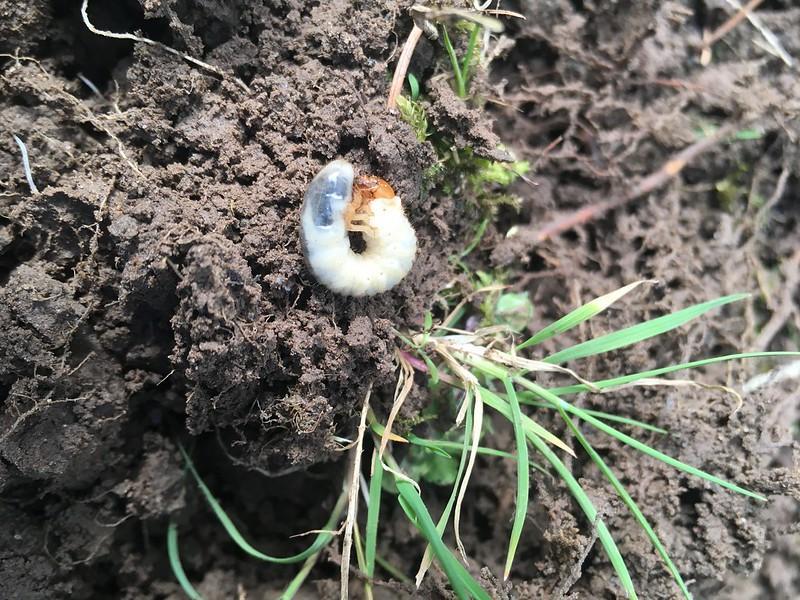
Apply a lawn insecticide specifically formulated for grub management as soon as more than six grubs are found.
Here is how to take care of your St. Augustine grass from January to April:
Watering
Understanding the top foot of soil texture to manage a lawn is essential. Wet soil all winter can bring several problems. Clay soils retain water longer. So, clay-soil lawns shouldn’t be kept too damp.
Sandy soils, however, drain quickly and dry out quickly. Therefore, they need to be watered more. A soil probe can be used to detect soil moisture.
Do not stop watering the lawn in dormancy to prevent overdrying. Dry winters can lead to grass desiccation. Watering to mitigate drought stress also reduces winter turf loss.
Most U.S. regions get enough winter rain to prevent lawn desiccation. However, this isn’t always the case. So, water the grass if no measurable rain falls for 21 to 25 days. This is especially important if warm, sunny days precede colder days. The increased soil moisture keeps turf growth points warmer, reducing grass crown death.
Fertilization
Conduct a soil test and use its findings to determine how much fertilizer you need to apply to your grass, and January to April is the best time to conduct such a test. Nevertheless, using nitrogen-rich lawn fertilizers is not recommended during this time period.
For example, if you fertilize your lawn in the spring to promote new turfgrass growth, and then frost destroys that growth, you may have some severe lawn problems.
Insect Control
If lawn grubs were a problem on your lawn previously, take out around a square foot of sod. If more than six grubs are found, you should immediately use a lawn insecticide labeled for grub control.
In terms of other bugs, cold winters usually keep them at bay. However, watch for mole crickets and chinch bugs as spring temperatures warm.
A warm spring might bring out mole crickets and chinch bugs. This isn’t, however, the best time to apply a pesticide cold to chilly soil and little insect activity. So, if the damage is severe, use a pesticide. If damage is minimal, wait to apply an insecticide.
Weed Control
St. Augustine grass is susceptible to 2,4-D not just during spring green-up but also during high summer temperatures. So, follow package guidelines for any herbicide and use it cautiously during these times.
Applying a pre-emergent herbicide at the beginning of the year is the most effective way to get rid of annual summer weeds, including crabgrass, goosegrass, and sand spurs. However, season-long management of annual warm-season weeds requires a second application once again after two months.
Then, a post-emergent herbicide might be used to eliminate pre-existing winter weeds. However, do not apply post-emergent herbicides to green grass. Also, wait until the grass has fully greened before applying a post-emergent herbicide—meanwhile, weed and bag.
Lawn Aeration
If you have used a pre-emergent herbicide in February or the middle of March, delay lawn aeration until the next herbicide application. These herbicides work by forming a barrier on the soil’s surface, preventing weeds from germinating.
So, if you disturb the soil after treatment, it will let weeds through. So, if pre-emergent was applied, delay aeration.
Overall, core aeration involves punching holes in the turf and soil to relieve compaction and allow air to reach the roots. This fixes infiltration and drainage issues. Once the fear of spring frost has passed, and the lawn is green, aerification and dethatching can be combined to reduce soil compaction and thatch.
Thatch Removal
Use a vertical mower or a dethatcher to eliminate a thatch layer if it becomes an issue in your yard. Dethatch St. Augustine grass if the thatch layer is more than half-inch thick.
For the best outcomes, use a dethatcher with about 1.5 to 2.5-inch blade spacing set to a 1/4-inch depth after the grass has entirely greened up.
A power rake can severely damage the lawn with 1-inch spacing. Then, to collect and get rid of turf, you can use a manual rake or a bagged mower.
Mowing
Reduce the summer mowing height. The mower height should be 2 inches. Setting the mower height too short can cause lawn scalping. Do this before the lawn greens up in April or May. Remember, though, the green-up timings can vary. In the inland, it occurs in May.
In southern and coastal South Carolina, this happens in April. Also, St. Augustine grass will often re-green in the winter or spring, only to turn brown by late-season frosts multiple times.
If possible, use a bagger to remove the dead winter debris and gather cuttings. Sharp mower blades cut grass without breaking leaves. Dull mower blades rip grass instead of cutting it, making it more disease-prone. Also, hand-rake the lawn to remove dead leaves.
Related: Dethatching St. Augustine Grass: A Complete Step By Step Guide
From June To August

Postemergence herbicide sprays can control annual and perennial broadleaf weeds during this time.
Here is how to take care of your St. Augustine grass from May to August:
Disease Control
It’s likely that there won’t be much disease activity at this time. However, St. Augustine grass is susceptible to developing a gray leaf spot at this time. Small patches with gray centers and dark purple or brown borders will appear on the leaves that have been affected by the disease.
In North Carolina, damage caused by gray leaf spot disease is relatively uncommon; sustained rain may cause the development of small uneven patches.
Insect Control
Conduct an inspection to look for insect pests and treat the area if necessary. Place a coffee can that has had its lid and bottom removed into the ground, and then fill the can with water. Any chinch bugs that are present will float to the surface.
Also, check for activity from chinch bugs in sunny areas if you notice indicators of drought, such as yellow blotches on your plants. If there are 15 or more chinch bugs in one square foot, you should take preventative measures against them.
Weed Control
Do not use herbicides on your lawn until the weeds are actively growing and the soil is not dry. Remember to apply a preemergence herbicide the following spring to get rid of the crabgrass and goosegrass. Also, since St. Augustinegrass is very vulnerable to 2,4-D and other herbicides, it’s important to exercise caution while applying herbicides.
Summer annual and perennial broadleaf weeds such as prostrate knotweed, spurge, and lespedeza can be managed using postemergence herbicide applications.
Watering
A dark, bluish-gray tint, footprints, and wilted, folded, or curled leaves signal it’s time to water. In order to gauge the depth of the moisture, probe the soil with a screwdriver. St. Augustine grass needs 1 to 1.25 inches of water weekly to preserve summer color.
So, water 4 to 6 inches deep in the morning. On sandy soils, water 0.5 inches every third day. Most domestic irrigation systems require 3 to 5 hours to apply 1 inch of water.
Watering practices will also vary depending on soil type. For instance, clay soils absorb water slowly, so irrigate until runoff occurs, wait a half hour, and then repeat.
Thatch, Fertilization & Mowing
If the thatch was a thickness of three-quarters of an inch during the previous summer, you should cut the grass to a height of two and a half inches and use a power rake with blade spacing of three inches to dethatch your lawn.
In June and August, apply a half pound of nitrogen per 1,000 square feet, and in July, apply one pound of nitrogen. If you do not have the results of a soil test, you should apply a full (N-P-K) fertilizer with a ratio of 3-1-2 or 4-1-2.
Also, during this time, the lawn should be mowed every five to seven days with St. Augustine grass but less frequently when the yard is under stress from drought.
From September To November
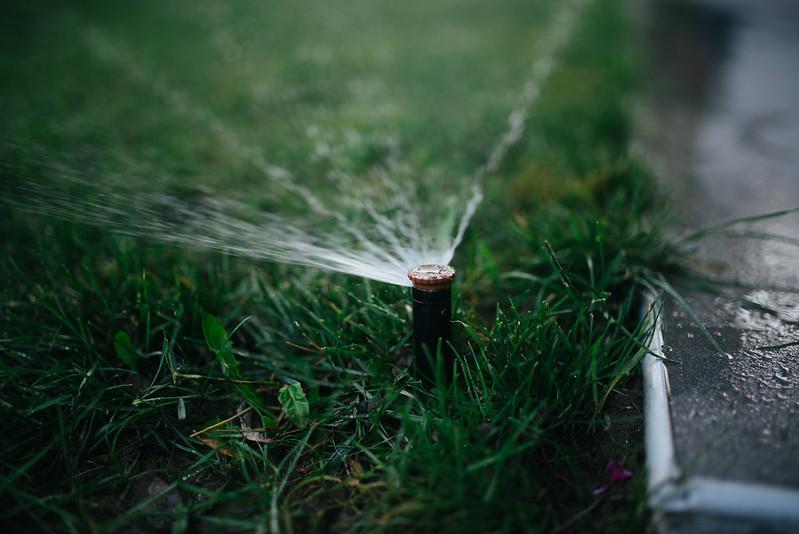
Newly placed sod also needs to be watered at this time to prevent it from drying out.
Here is how to take care of your St. Augustine grass from September to November:
Disease Control
Large patch disease can appear during this time, particularly when the weather is cool and wet. The pathogen is at its most active when soil temperatures drop to 80 degrees Fahrenheit in the fall; however, significant development can also occur in the spring.
Applications for preventative control in the fall are absolutely necessary for management. In the fall, applications may range from 3 to 5, depending on the weather and other factors.
Weed Control
Applying a two or three-way herbicide containing 2,4D + dicamba and/or MCPP registered for use on St. Augustine grass as a postemergence treatment is an effective method for controlling broadleaf weeds.
However, do not make more than two applications in a single calendar year, with a minimum gap of 30 days between each application.
Also, do not apply postemergence herbicides unless weeds are growing actively.
Watering
While the grass is continually growing and even after the lawn has gone dormant, it is essential to water it in order to prevent drought stress and excessive dehydration. Sod that has recently been laid has to be watered at this time as well to avoid drying out.
Thatch, Fertilization & Mowing
Beginning in September, you should check for thatch. If the thatch layer is more than three-quarters of an inch thick, you should dethatch your lawn in the spring.
The middle of September is often the cutoff date for fertilizing St. Augustine grass. So, in September, the rate should be no more than half a pound of nitrogen per 1,000 square feet.
Last but not least, St. Augustine grass should be cut once every 5 to 7 days at this time but less frequently when the lawn is under stress from drought.
From December To February
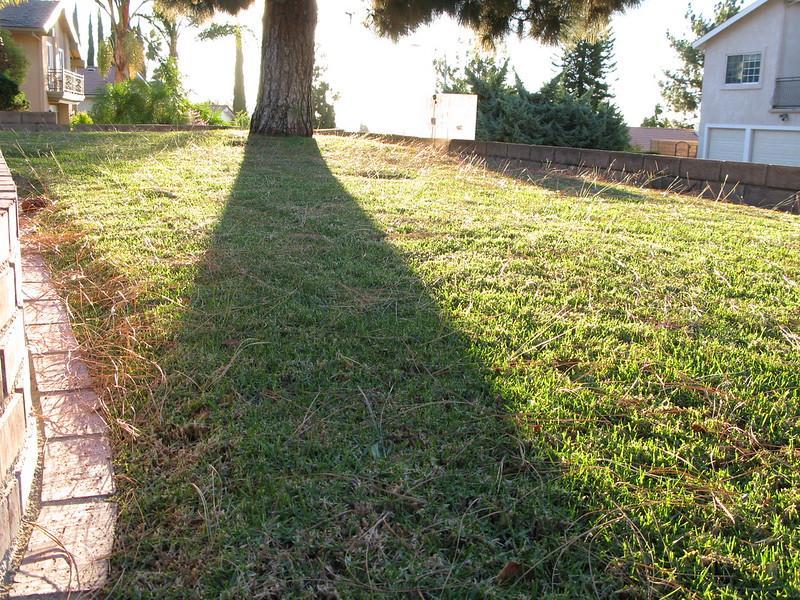
At this time, clear your lawn of debris to get it ready for its active growth period.
Here is how to take care of your St. Augustine grass from December to February:
Weed Control
When treated in November or December, certain herbicides like atrazine and simazine are effective at controlling annual bluegrass as well as a number of winter annual broadleaf weeds. Always make sure to read the label and follow the instructions precisely.
In addition, put broadleaf herbicides on chickweed and henbit to keep them under control. However, because St. Augustine grass is sensitive to some postemergence herbicides like 2,4-D, it is essential to use caution when applying these herbicides and guidelines.
Watering
Even though the grass on the lawn will be dormant, watering it occasionally can help keep it from being overly dehydrated during the dry winter. Additionally, during this time, sod that has recently been planted needs to be watered to keep it from drying out.
Thatch, Fertilization & Mowing
Since the lawn will probably be dormant at this time, there is no need for dethatching.
In addition to that, you should not use any fertilizer or lime.
Similarly, the lawn does not need to be mowed at this time. However, it may be essential to remove debris. But, burning the excess debris is not an excellent way to get rid of it. This poses a risk of fire and could be detrimental to the lawn.
Final Thoughts
St. Augustine grass is a special kind that does very well in the intense heat and salt air of coastal lawns. Some may even call it a luxury turf for the many beach resorts in Hawaii and Mexico that mark the Gulf of Mexico.
This grass prefers warm summers but is not limited to coastal areas. In the United States, it is a common type of grass.
And it is terrific grass for homeowners to have in their yards, especially if they want to increase the amount of greenery there without putting in a lot of effort.
Frequently Asked Questions (FAQs)
What are the pros and cons of St. Augustine grass?
Here are the pros and cons of St. Augustine grass in the form of a table:
| Pros | Cons |
| Grows well in shade Salt tolerant Survives extreme heat Thrives in mixed, well-drained soil Tolerates moderate foot traffic Tolerates wide range of pH levels Endures wet conditions very well | High maintenance Stunted by cold and wet conditions Loses color in cool weather Only handles moderate traffic Susceptible to pests & diseases Cannot be cultivated with seed Can’t tolerate heavy foot traffic |
Is Saint Augustine a good grass?
St. Augustine is, in fact, an excellent grass that can tolerate high heat and humidity very well, making it quite popular in Florida and the Gulf regions.
Due to the fact that its blue-green blades form a dense turf, it can be established fast and easily. Additionally, it can handle salt, making it an excellent choice for coastal yards.
Does St. Augustine grass like sun or shade?
St. Augustine grass does well in full sun but may also grow in partial shade if it gets at least three to four hours of sunlight daily.
Another thing, St. Augustine grass is the most shade-tolerant of all warm-season grass species in the U.S. So, if you live in the South and have a shady lawn, you might want to try this grass.
Is Bermuda or St. Augustine grass better?
Choose St. Augustine grass if you live on the Gulf Coast or other warm coasts. This is because zones 8 to 10 are ideal for growing St. Augustine grass.
Bermuda grass, on the other hand, thrives in zones 7, 8, 9, and 10. However, Bermuda grasses often outperform St. Augustine grass in terms of wear tolerance and injury repair.
Where does St. Augustine grass grow best?
St. Augustine grass is a subtropical turf grass that can tolerate high levels of salt and is ideal for humid environments. Its primary cultivation region is the warm-climate states, particularly Florida.
St. Augustine grass, much like Bermuda grass, does well in warm conditions, but in mild, coastal settings, St. Augustine grass is superior to Bermuda grass.
Sources for Further Reading
St. Augustine Grass – Gardening Solutions – University of Florida, Institute of Food and Agricultural Sciences. (2022). Retrieved from https://gardeningsolutions.ifas.ufl.edu/lawns/turf-types/st-augustinegrass.html
St. Augustinegrass Yearly Maintenance Program. (2022). Clemson University Cooperative Extension Service. Retrieved 12 October 2022, from https://hgic.clemson.edu/factsheet/st-augustinegrass-maintenance-calendar/
Healthy Lawns. St. Augustinegrass. (2022). Agriculture and Natural Resources, University of California. Retrieved 12 October 2022, from http://ipm.ucanr.edu/TOOLS/TURF/TURFSPECIES/staugust.html
Editor’s Recommendations
Top Dressing For Lawns: How To Do It & Is It Worth The Effort?
Sevin Dust 101: How To Use Sevin Dust To Control Pests, and Is It Safe?
How To Start A Lawn Mower With Old Gas? Easy Tips & Tricks From The Experts







